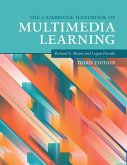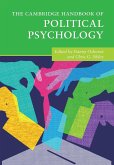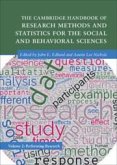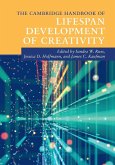The Cambridge Handbook of Implicit Bias and Racism
Herausgeber: Krosnick, Jon A.; Scott, Amanda L.; Stark, Tobias H.
The Cambridge Handbook of Implicit Bias and Racism
Herausgeber: Krosnick, Jon A.; Scott, Amanda L.; Stark, Tobias H.
- Broschiertes Buch
- Merkliste
- Auf die Merkliste
- Bewerten Bewerten
- Teilen
- Produkt teilen
- Produkterinnerung
- Produkterinnerung
Implicit bias has become a part of popular culture, and interventions to reduce implicit bias have been introduced in police forces, educational settings, and workplaces. Yet there is still much to understand about this phenomenon. This essential handbook reviews the current state of knowledge and proposes directions for future research.
Andere Kunden interessierten sich auch für
![The Cambridge Handbook of Identity The Cambridge Handbook of Identity]() The Cambridge Handbook of Identity66,99 €
The Cambridge Handbook of Identity66,99 €![The Cambridge Handbook of Multimedia Learning The Cambridge Handbook of Multimedia Learning]() The Cambridge Handbook of Multimedia Learning86,99 €
The Cambridge Handbook of Multimedia Learning86,99 €![The Cambridge Handbook of Political Psychology The Cambridge Handbook of Political Psychology]() The Cambridge Handbook of Political Psychology66,99 €
The Cambridge Handbook of Political Psychology66,99 €![The Cambridge Handbook of Stigma and Mental Health The Cambridge Handbook of Stigma and Mental Health]() The Cambridge Handbook of Stigma and Mental Health59,99 €
The Cambridge Handbook of Stigma and Mental Health59,99 €![The Cambridge Handbook of Dyslexia and Dyscalculia The Cambridge Handbook of Dyslexia and Dyscalculia]() The Cambridge Handbook of Dyslexia and Dyscalculia59,99 €
The Cambridge Handbook of Dyslexia and Dyscalculia59,99 €![The Cambridge Handbook of Research Methods and Statistics for the Social and Behavioral Sciences The Cambridge Handbook of Research Methods and Statistics for the Social and Behavioral Sciences]() The Cambridge Handbook of Research Methods and Statistics for the Social and Behavioral Sciences71,99 €
The Cambridge Handbook of Research Methods and Statistics for the Social and Behavioral Sciences71,99 €![The Cambridge Handbook of Lifespan Development of Creativity The Cambridge Handbook of Lifespan Development of Creativity]() The Cambridge Handbook of Lifespan Development of Creativity66,99 €
The Cambridge Handbook of Lifespan Development of Creativity66,99 €-
-
-
Implicit bias has become a part of popular culture, and interventions to reduce implicit bias have been introduced in police forces, educational settings, and workplaces. Yet there is still much to understand about this phenomenon. This essential handbook reviews the current state of knowledge and proposes directions for future research.
Produktdetails
- Produktdetails
- Cambridge Handbooks in Psychology
- Verlag: Cambridge University Press
- Seitenzahl: 818
- Erscheinungstermin: 25. November 2024
- Englisch
- Abmessung: 244mm x 170mm x 43mm
- Gewicht: 1374g
- ISBN-13: 9781108794435
- ISBN-10: 1108794432
- Artikelnr.: 67863703
- Herstellerkennzeichnung
- Libri GmbH
- Europaallee 1
- 36244 Bad Hersfeld
- gpsr@libri.de
- Cambridge Handbooks in Psychology
- Verlag: Cambridge University Press
- Seitenzahl: 818
- Erscheinungstermin: 25. November 2024
- Englisch
- Abmessung: 244mm x 170mm x 43mm
- Gewicht: 1374g
- ISBN-13: 9781108794435
- ISBN-10: 1108794432
- Artikelnr.: 67863703
- Herstellerkennzeichnung
- Libri GmbH
- Europaallee 1
- 36244 Bad Hersfeld
- gpsr@libri.de
Foreword; Introduction: taking stock of explicit and implicit prejudice; 1.
Report on the NSF conference on implicit bias; Section 1. What is implicit
bias and (how) can we measure it?: 2. Implicit bias: what is it?; 3.
Lessons from two decades of project implicit; 4. Aversive racism and
implicit bias; 5. Stretching the limits of science: was the implicit-racism
debate a 'bridge too far' for social psychology?; Section 2. Predicting
behavior and attitudes with measures of implicit bias: 6. The impact of
implicit racial bias in racial health disparities: a practical problem with
theoretical implications; 7. Revisiting the measurement of group schemas in
political science; 8. Implicit bias and discrimination: evidence on
causality; 9. What is the unique contribution of implicit measures in
predicting political choices?; 10. Predicting biased behavior with implicit
attitudes: results from a voting experiment and the 2008 Presidential
election; Section 3. Challenges of research on implicit Bias: 11. The
rationality, interpretation and overselling of tests of implicit cognition;
12. Listening to measurement error: lessons from the IAT; 13. IAT Scores,
racial gaps, and scientific gaps; 14. Commentary; Section 4. Improving
measurement and theorizing about implicit bias: 15. Methodological issues
in the study of implicit attitudes; 16: The bias of crowds: rethinking
implicit bias in social context; 17. Latent state-trait analyses for
process models of implicit measures; 18. Increasing the validity of
implicit measures: new solutions for assessment, conceptualization, and
action explanation; 19. A model of moderated convergence between explicit
dispositions, implicit dispositions, and behavior; 20: Complications in
predicting intergroup behavior from implicit biases: one size does not fit
all; Section 5. How to change implicit bias?: 21. Changing implicit bias vs
empowering people to address the personal dilemma of unintentional bias;
22. How can we change implicit bias toward outgroups?; Section 6. Explicit
prejudice, alive and well?: 23. A survey researcher's response to the
implicit revolution: listen to what people say; 24. A history of the new
racisms: symbolic racism, modern racism, and racial resentment; 25. The
relations among explicit prejudice measures: anti-black affect and
perceptions of value violation as predictors of symbolic racism and
attitudes toward racial policies; 26. Complexities in the measurement of
explicit racial attitudes; 27. The continuing relevance of Whites' explicit
bias-and reflections on the tools to measure it; Section 7. The public's
(mis)perception of implicit bias: 28. Public attitudes on implicit bias;
29. The mass public's view of implicit bias, with implications for
scientific communication in a politically polarized age.
Report on the NSF conference on implicit bias; Section 1. What is implicit
bias and (how) can we measure it?: 2. Implicit bias: what is it?; 3.
Lessons from two decades of project implicit; 4. Aversive racism and
implicit bias; 5. Stretching the limits of science: was the implicit-racism
debate a 'bridge too far' for social psychology?; Section 2. Predicting
behavior and attitudes with measures of implicit bias: 6. The impact of
implicit racial bias in racial health disparities: a practical problem with
theoretical implications; 7. Revisiting the measurement of group schemas in
political science; 8. Implicit bias and discrimination: evidence on
causality; 9. What is the unique contribution of implicit measures in
predicting political choices?; 10. Predicting biased behavior with implicit
attitudes: results from a voting experiment and the 2008 Presidential
election; Section 3. Challenges of research on implicit Bias: 11. The
rationality, interpretation and overselling of tests of implicit cognition;
12. Listening to measurement error: lessons from the IAT; 13. IAT Scores,
racial gaps, and scientific gaps; 14. Commentary; Section 4. Improving
measurement and theorizing about implicit bias: 15. Methodological issues
in the study of implicit attitudes; 16: The bias of crowds: rethinking
implicit bias in social context; 17. Latent state-trait analyses for
process models of implicit measures; 18. Increasing the validity of
implicit measures: new solutions for assessment, conceptualization, and
action explanation; 19. A model of moderated convergence between explicit
dispositions, implicit dispositions, and behavior; 20: Complications in
predicting intergroup behavior from implicit biases: one size does not fit
all; Section 5. How to change implicit bias?: 21. Changing implicit bias vs
empowering people to address the personal dilemma of unintentional bias;
22. How can we change implicit bias toward outgroups?; Section 6. Explicit
prejudice, alive and well?: 23. A survey researcher's response to the
implicit revolution: listen to what people say; 24. A history of the new
racisms: symbolic racism, modern racism, and racial resentment; 25. The
relations among explicit prejudice measures: anti-black affect and
perceptions of value violation as predictors of symbolic racism and
attitudes toward racial policies; 26. Complexities in the measurement of
explicit racial attitudes; 27. The continuing relevance of Whites' explicit
bias-and reflections on the tools to measure it; Section 7. The public's
(mis)perception of implicit bias: 28. Public attitudes on implicit bias;
29. The mass public's view of implicit bias, with implications for
scientific communication in a politically polarized age.
Foreword; Introduction: taking stock of explicit and implicit prejudice; 1.
Report on the NSF conference on implicit bias; Section 1. What is implicit
bias and (how) can we measure it?: 2. Implicit bias: what is it?; 3.
Lessons from two decades of project implicit; 4. Aversive racism and
implicit bias; 5. Stretching the limits of science: was the implicit-racism
debate a 'bridge too far' for social psychology?; Section 2. Predicting
behavior and attitudes with measures of implicit bias: 6. The impact of
implicit racial bias in racial health disparities: a practical problem with
theoretical implications; 7. Revisiting the measurement of group schemas in
political science; 8. Implicit bias and discrimination: evidence on
causality; 9. What is the unique contribution of implicit measures in
predicting political choices?; 10. Predicting biased behavior with implicit
attitudes: results from a voting experiment and the 2008 Presidential
election; Section 3. Challenges of research on implicit Bias: 11. The
rationality, interpretation and overselling of tests of implicit cognition;
12. Listening to measurement error: lessons from the IAT; 13. IAT Scores,
racial gaps, and scientific gaps; 14. Commentary; Section 4. Improving
measurement and theorizing about implicit bias: 15. Methodological issues
in the study of implicit attitudes; 16: The bias of crowds: rethinking
implicit bias in social context; 17. Latent state-trait analyses for
process models of implicit measures; 18. Increasing the validity of
implicit measures: new solutions for assessment, conceptualization, and
action explanation; 19. A model of moderated convergence between explicit
dispositions, implicit dispositions, and behavior; 20: Complications in
predicting intergroup behavior from implicit biases: one size does not fit
all; Section 5. How to change implicit bias?: 21. Changing implicit bias vs
empowering people to address the personal dilemma of unintentional bias;
22. How can we change implicit bias toward outgroups?; Section 6. Explicit
prejudice, alive and well?: 23. A survey researcher's response to the
implicit revolution: listen to what people say; 24. A history of the new
racisms: symbolic racism, modern racism, and racial resentment; 25. The
relations among explicit prejudice measures: anti-black affect and
perceptions of value violation as predictors of symbolic racism and
attitudes toward racial policies; 26. Complexities in the measurement of
explicit racial attitudes; 27. The continuing relevance of Whites' explicit
bias-and reflections on the tools to measure it; Section 7. The public's
(mis)perception of implicit bias: 28. Public attitudes on implicit bias;
29. The mass public's view of implicit bias, with implications for
scientific communication in a politically polarized age.
Report on the NSF conference on implicit bias; Section 1. What is implicit
bias and (how) can we measure it?: 2. Implicit bias: what is it?; 3.
Lessons from two decades of project implicit; 4. Aversive racism and
implicit bias; 5. Stretching the limits of science: was the implicit-racism
debate a 'bridge too far' for social psychology?; Section 2. Predicting
behavior and attitudes with measures of implicit bias: 6. The impact of
implicit racial bias in racial health disparities: a practical problem with
theoretical implications; 7. Revisiting the measurement of group schemas in
political science; 8. Implicit bias and discrimination: evidence on
causality; 9. What is the unique contribution of implicit measures in
predicting political choices?; 10. Predicting biased behavior with implicit
attitudes: results from a voting experiment and the 2008 Presidential
election; Section 3. Challenges of research on implicit Bias: 11. The
rationality, interpretation and overselling of tests of implicit cognition;
12. Listening to measurement error: lessons from the IAT; 13. IAT Scores,
racial gaps, and scientific gaps; 14. Commentary; Section 4. Improving
measurement and theorizing about implicit bias: 15. Methodological issues
in the study of implicit attitudes; 16: The bias of crowds: rethinking
implicit bias in social context; 17. Latent state-trait analyses for
process models of implicit measures; 18. Increasing the validity of
implicit measures: new solutions for assessment, conceptualization, and
action explanation; 19. A model of moderated convergence between explicit
dispositions, implicit dispositions, and behavior; 20: Complications in
predicting intergroup behavior from implicit biases: one size does not fit
all; Section 5. How to change implicit bias?: 21. Changing implicit bias vs
empowering people to address the personal dilemma of unintentional bias;
22. How can we change implicit bias toward outgroups?; Section 6. Explicit
prejudice, alive and well?: 23. A survey researcher's response to the
implicit revolution: listen to what people say; 24. A history of the new
racisms: symbolic racism, modern racism, and racial resentment; 25. The
relations among explicit prejudice measures: anti-black affect and
perceptions of value violation as predictors of symbolic racism and
attitudes toward racial policies; 26. Complexities in the measurement of
explicit racial attitudes; 27. The continuing relevance of Whites' explicit
bias-and reflections on the tools to measure it; Section 7. The public's
(mis)perception of implicit bias: 28. Public attitudes on implicit bias;
29. The mass public's view of implicit bias, with implications for
scientific communication in a politically polarized age.









